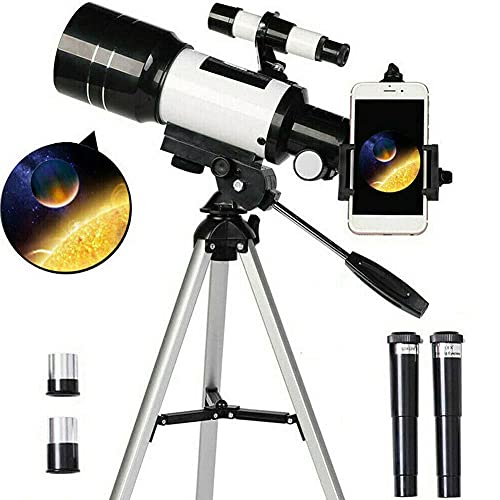The difference between a Newtonian and a Dobsonian telescope
When it comes to telescopes, there are many different types to choose from. Two popular options are Newtonian telescopes and Dobsonian telescopes. While both of these telescopes are used for amateur astronomy, they differ in design and functionality. In this article, we will explore the main differences between a Newtonian and a Dobsonian telescope.
Design
A Newtonian telescope is named after Sir Isaac Newton, who invented the design in the 17th century. It consists of a concave primary mirror at the back of the telescope tube, which gathers and focuses light. This light is then reflected to a smaller, flat secondary mirror, which directs the light to the eyepiece. The secondary mirror is usually mounted on the side of the telescope tube, slightly obstructing the incoming light.
A Dobsonian telescope, on the other hand, is named after amateur astronomer John Dobson. It features a Newtonian design, with a primary mirror and a secondary mirror. However, the main difference lies in the mount. A Dobsonian telescope uses a simple yet sturdy altazimuth mount, which allows for easy manual movement in both vertical and horizontal directions. This mount typically consists of a box-like base with a rotating platform on top, allowing the telescope to be easily pointed to different areas of the night sky.
Aperture and Light Gathering Capability
The aperture of a telescope refers to the diameter of its primary mirror or lens. The larger the aperture, the more light the telescope can gather. In general, a larger aperture allows for better image resolution and the ability to observe fainter objects in the night sky.
Newtonian telescopes come in various sizes, with apertures ranging from a few inches to several feet. Similarly, Dobsonian telescopes also come in different sizes, with apertures typically ranging from 6 inches to 18 inches or more. However, Dobsonian telescopes are often more popular for their larger apertures and light gathering capabilities compared to other designs in the same price range. This makes them an excellent choice for deep-sky observation and astrophotography.
Cost and Portability
When it comes to cost, Newtonian and Dobsonian telescopes are relatively affordable compared to other types of telescopes. However, the cost can vary depending on the size and brand.
As for portability, Newtonian telescopes can range from compact and portable to large and cumbersome. The size and weight of the telescope depend on its aperture and focal length. Smaller Newtonian telescopes are more portable and easier to set up, making them suitable for beginners or those who want to travel with their telescopes.
Dobsonian telescopes, on the other hand, are known for their simplicity and ease of use. The altazimuth mount provides stability and smooth movement, making it easier to track objects in the night sky. However, because of the larger apertures and sturdy mount, Dobsonian telescopes tend to be larger and heavier than their Newtonian counterparts. This can make them less portable and more challenging to transport.
Applications and Versatility
Both Newtonian and Dobsonian telescopes are suitable for a wide range of astronomical observations. With their larger apertures, these telescopes are excellent for deep-sky observation, such as observing galaxies, nebulae, and star clusters. They can also be used to observe planets in our solar system and the moon in detail.
However, the Newtonian design allows for easy customization and versatility. The tube can be easily detached from the mount, making it easier to upgrade the telescope with different eyepieces, filters, or even attach a camera for astrophotography. This flexibility makes Newtonian telescopes a popular choice for those interested in experimenting with different accessories and techniques.
In summary, the main difference between a Newtonian and a Dobsonian telescope lies in their mount design. Newtonian telescopes have a more traditional mount, while Dobsonian telescopes use a simple yet sturdy altazimuth mount. Additionally, Dobsonian telescopes are often favored for their larger apertures and light gathering capabilities, making them a popular choice for deep-sky observation. However, Newtonian telescopes offer more customization options and versatility. Ultimately, the choice between a Newtonian and a Dobsonian telescope depends on individual preferences and requirements.






